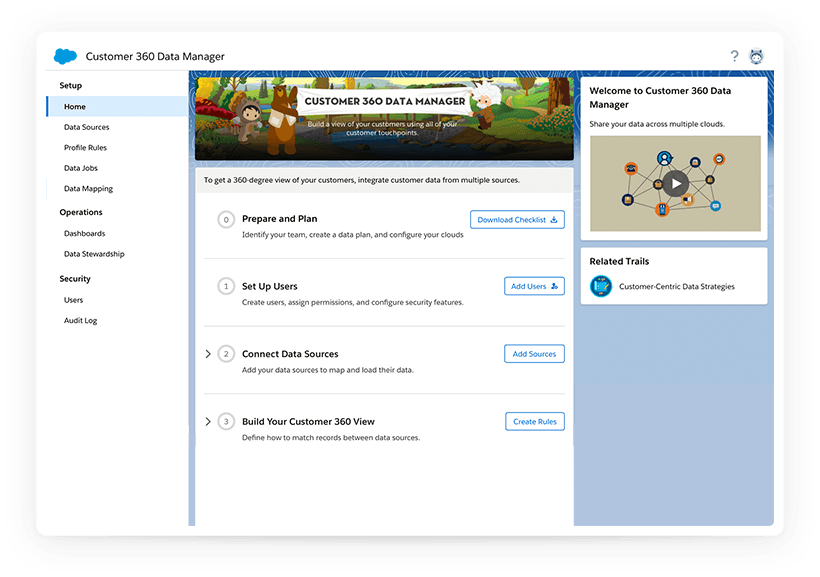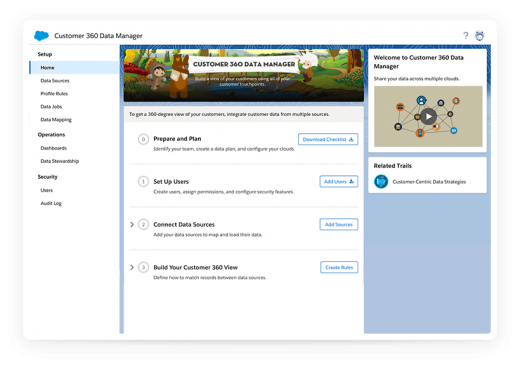Salesforce makes latest move in CDP race
360 Audiences, Salesforce’s CDP, is finally set to launch this month.

“We’re doing it the hard way,” said Chris O’Hara, VP of Product Marketing at Salesforce.
“Most independent CDPs have been built on public cloud infrastructure, using a lot of open source tools,” he explained. “We could have gone down that route and more quickly provisioned a CDP, but we chose to build it on the core platform — on the same technology that Sales and Service Cloud are built on, and that’s a little bit harder.”
O’Hara was responding to out question why Salesforce’s CDP, 360 Audiences, announced at Dreamforce last year, has taken until October 2020 to become available. Salesforce is running behind its most obvious competitors: Adobe and Oracle announced the availability of their CDPs in the fall of 2019, and last week Oracle announced a range of updates to Oracle Unity.
360 Audiences. We wanted to fully understand the recent 360 Audiences announcement, and clarify some of the branding around Salesforce’s “360” products. After all, 360 Truth, which has been available for some time, looked to some observes like Salesforce’s CDP (“Build a single source of truth for your customers“). That’s not the case, O’Hara explained.
“Let’s start with Digital 360,” O’Hara said. “Digital 360 is a re-imagining of the capabilities we have around three things: Marketing Cloud, Commerce Cloud, and what we used to call Community Cloud, re-branded as Experience Cloud. Nothing new here, but a way for CMOs and CDOs to think — we’re not just Marketing Cloud, but have capabilities that cut across [the Clouds].”
360 Truth incorporates a set of four core platform services: Data Manager (the ability to resolve identities for known customers — available for some time); a set of platform identity services (this is single sign-on and ID management —nothing to do with identity resolution); a Privacy Center (launching in November); and Customer 360 Audiences (the CDP).
“This is where people log in, capture data from different sources, do their customer segmentation, activate data out of the system, and get insights around the data they have,” said O’Hara, referring to Audiences. While it’s possible to upload data or unknown customers into Audiences, O’Hara said it would likely be spring 2021 before known and unknown data will be managed together. “At that point you’ll be able to bring in things like advertising interaction data, device ID, mobile app IDs, hashed email, etc.”
Validating the market. To get some perspective on the Adobe, Oracle and Salesforce CDP moves, we turned to Sav Khetan, VP Product at Tealium, a vendor which offers a Customer Data Hub, and a close follower of the CDP space. He has not been surprised to see the big suites racing to install their own CDPs.
“This felt inevitable,” he said. “You’re pulling big data about the same person in so many different ways, and unless you put it together how are you going to understand the full picture of the relationship you have with that customer? This was always going to happen; the bigger clouds are showing the market by investing in this area that they agree, from a data strategy point of view, you need a single source of truth.”
He also thinks the big players are helping the CDP category as a whole. “We are very happy that this is validating this market. Whenever all the big names show up in a market like this, the awareness goes up significantly, the education goes up significantly, and you start seeing different flavors of the same product— that actually helps buyers understand what they need to buy and why.” But he sees a downside too: namely, “noise and confusion” for the many brands that use a mix of platforms and solutions to deliver CX.
Noise and confusion. “Adobe’s message is ‘Adobe,’” he said. “You use our Experience Platform, and our Real-Time CDP works flawlessly with it. Simple. Adobe’s strategy makes sense; they are very much going for a walled garden, and if you are a full Adobe shop there’s clear benefit in using Adobe tools. The only thing is, Adobe is expensive.”
While Adobe and Oracle, he said, are explicitly adding value to their own stacks through these CDPs, “Salesforce may not be saying that right now, but they’re still doing it. They’ve had this gap for a long time — Sales Cloud, Marketing Cloud, eCommerce Cloud, Service Cloud were not actually connected as they should have been. Their CDP brings those four data silos together in a meaningful way, but it’s still a database, it’s still batch-based.” That puts real-time activation of the data out of reach, said Khetan.
O’Hara demurred. “We have real-time data capture capabilities today, but we also have the vision of integrating a lot of what we acquired with Evergage, which is a real-time CDP, and our roadmap bakes in a couple of different Evergage capabilities which go well beyond batch. The CDP we’re releasing in October has real-time data ingestion capabilities coming from the native integration with Sales, Service and Marketing Clouds. Can you batch and upload warehouse data? Sure, but it’s not solely batch-based.”
As evidence he points to the direct integration with Amazon S3 (AWS) as a primary “data-in” capability.
Multiple data sources. Independent CDPs, said Khetan, are much more serious about drawing data from multiple outside sources than the bigger players. I asked O’Hara whether he saw not just 360 Audiences, but the Adobe and Oracle CDPs, as having elements of a walled garden.
“We made a six-and-a-half billion dollar investment in Mulesoft, and part of the thinking behind that is not all of our customers are 100% on Salesforce. They have their own data warehouses, Azure and Amazon instances, and a variety of partners. What Mulesoft gives us is a scaled API platform that already has thousands of connections. As we bake that into the CDP, that becomes a core tenet of our data-in philosophy. So it’s not just native connectivity with the core platforms, or the S3 connector we’re launching with — it’s the ability of Mulesoft to connect any ERP system, any data warehouse that in the long-term gives us more extensibility from a data ingestion perspective than any other platform.”
This story first appeared on MarTech Today.
Marketing Land – Internet Marketing News, Strategies & Tips
(33)



